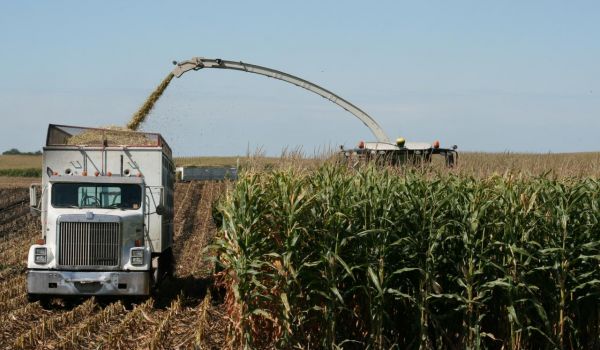Corn Silage: Getting It “Just Right”

The crops are maturing, kids are back in school, football season is in the air, and hints of fall weather and nature are peeking through. It makes me think of harvest. And for dairy and livestock producers, one of the early crops to harvest is corn silage.
Recently I was reading Goldilocks and the Three Bears to my grandsons. You know the story – Goldilocks takes her time sampling and testing the porridge, the chair, and the bed to get it “just right”.
I got to thinking about “getting it just right” in relation to the upcoming corn silage harvest, wondering how farmers can get their silage “just right”.
I concluded that while harvest timing, storage, and feed-out are all important to overall silage quality, I believe the #1 factor to “getting it just right” is whole plant harvest moisture.
So, be like Goldilocks. Not too wet. Not too dry. But, just right!
Too Wet
Harvesting corn silage too early at less than 30% dry matter (DM) or more than 70% whole plant moisture will result in lower starch concentration in the silage.
Too Dry
Mature corn silage (silage with more than 38% DM or less than 62% whole plant moisture) may also have less nutritional value because of lower fiber and starch digestibility, and poor storage results.
Just Right
For many years, the kernel milk-line method was the indicator used to determine harvest timing. Beginning at corn dent, the milk-line moves down the kernel as progression to black layer, or physiological maturity. You can break an ear in half and easily see this milk-line. Past thinking was that a ½ kernel milk-line meant 65% whole plant moisture.
But dry matter content of the whole plant varies with maturity. Geographic location, planting date, hybrid selection, and weather conditions affect the relationship between kernel milk-line position and whole plant dry matter content. Research has demonstrated that the position of the kernel milk-line is not a reliable indicator for determining harvest timing. It is, however, a useful indicator of when to sample fields to measure plant dry matter.
The only reliable method of determining the optimal time to harvest corn silage is to sample the crop and directly measure the percentage of dry matter of whole plants. Combined with average whole plant dry-down rates, this method can roughly predict the proper time to harvest corn silage.
There are no shortcuts – you’ll need to test early and often. By testing early, you’ll have a benchmark for further testing and harvest timing. There is no fix if corn silage gets too dry.
To help get accurate whole plant corn moisture readings, use a silage moisture tester or a feed lab with quick turnaround on moisture analysis. Use these moisture tests to determine harvest timing. Tip: Typical drydown for whole plant is 0.5% per day.
Once you’ve achieved an optimal harvest moisture, follow with good harvest and management techniques including packing, covering, sealing, and feedout management.
I believe that if you follow this advice, you’ll be well on your way to corn silage that is “just right”.
Lee Buchholz is an exclusive Peterson Farms Seed Dealer in the Grey Eagle-Long Prairie, MN, area. In addition to dairy farming for 35 years, Lee also has managed a seed production and conditioning operation for 20 years, conducted independent corn silage research for 10 years, and is a former Monsanto District Sales Manager. Lee knows corn!



